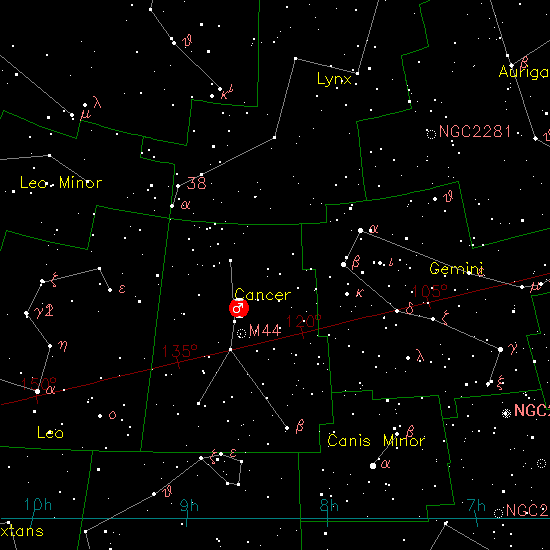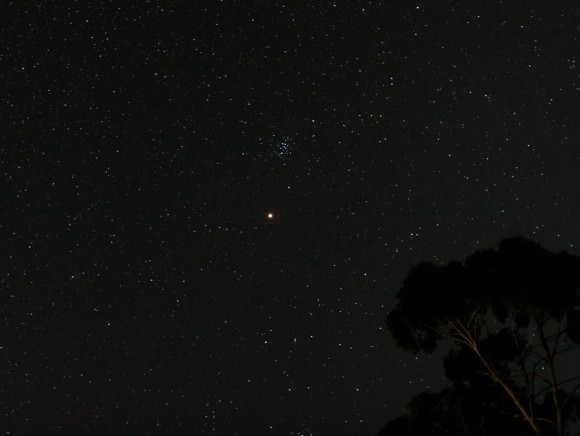Have you been watching the sweet movements of Mars as it cruises across the starry nights? Perhaps, like many of us, you’re snowed in right now and could use a little mental and visual inspiration. If so, then step inside and let’s take a look at what it’s like to enjoy clear, dark skies while riding on the ecliptic plane…
This sumptuous image was taken.. well, tomorrow, actually. If you’re into stellar patterns, then it didn’t take you long to notice the stars were “upside down” in relation to the background – a sure clue it came from the southern hemisphere. And you’d be right! The photo is a ten-second exposure taken with a tripod mounted Nikon camera and done by the one and only “Tasmanian Devil” – Shevill Mathers. (And how I’d love to be exposed to 10 seconds of that kind of sky action!)
Can you imagine just stepping out your back door and seeing the stars so bright and beautiful? For those of us who may never get a chance to travel out of our earthly hemisphere, the vision would be incredible – but all wrong for what we know. Why? Because we’re simply accustomed to certain things being in a certain place in the sky, and one of the most imprinted of all is the ecliptic plane. Nope, it’s not a flight you can hop to another country where the weather is warmer, but it is the apparent path the Sun follows across the sky during the year and the projection of the Earth’s orbital plane onto the celestial sphere. The ecliptic plane would seem to move to the east along this imaginary spherical surface, the celestial sphere, in relation to the fixed stars. In this case, the (well, almost) fixed set of stars we’re looking at is Messier Object 44, but where will Mars go next? Not precisely in the direction you might think.
While we might believe the planets also follow the ecliptic plane exactly, that’s just not so. Our solar system members follow the invariable plane of a planetary system, also called Laplace’s invariable plane. Without getting too technical, this means a slight change in the magnitude of the angular momentum of the planets, as well as a change in their direction (precession) because the rotational axes are not parallel to the orbital axes. Add to that the galactic plane and set everything spinning. If you think that’s confusing, then just imagine the ecliptic being on the “wrong” side of the sky!
Whether it’s right or wrong, Mars and Messier 44 will still be dancing around with each other for many days yet to come. Be sure to catch this lovely vision and try not to get dizzy!
Many thanks to Shevill Mathers for sharing a southern summer night with us!



I was able to see Mars and M44 last Monday, during a short break in cloud cover, with 10×50 wide field binoculars. What an amazing view.
Like Tammy said,
peace,
Tim